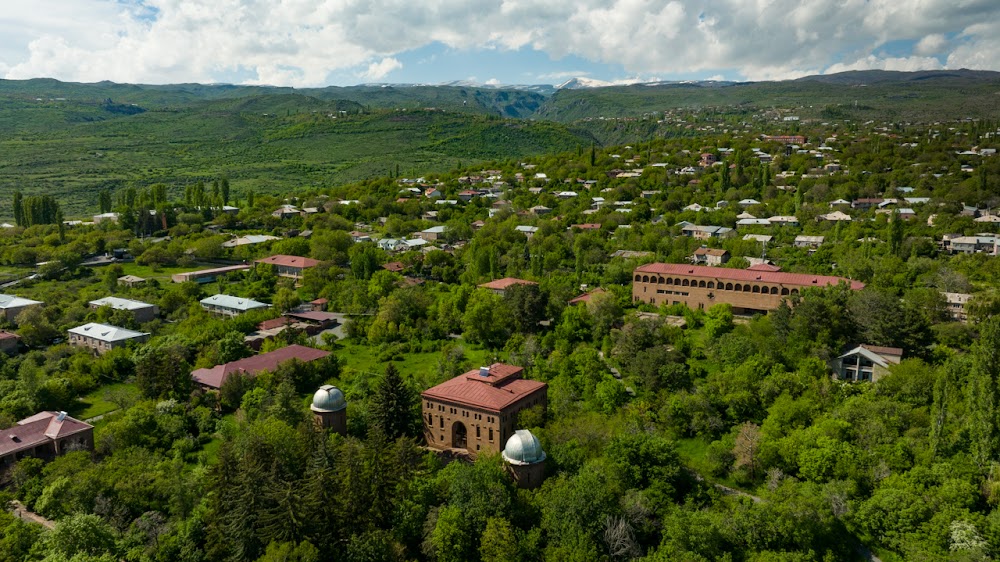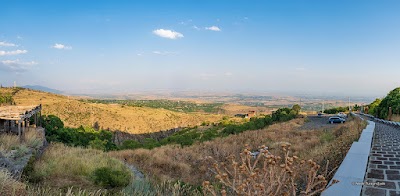Aragatsotn Historical Museum (Արագածոտնի պատմության թանգարան)
Overview
The Aragatsotn Historical Museum, located in Armenia's stunning Aragatsotn Region, offers a captivating journey into the area’s rich past. This museum is a hidden gem, perfect for foreign tourists eager to immerse themselves in the vibrant tapestry of Armenian history and culture. It provides a comprehensive overview of the heritage that has shaped local communities over centuries, making it a must-visit destination.
Founded in 1982, the museum was established to preserve and showcase the unique cultural artifacts from the Aragatsotn region. The building itself is an architectural delight, blending traditional Armenian styles with modern elements to create an inviting atmosphere for visitors. As you step inside, you’ll be greeted by a thoughtfully curated selection of exhibits that span various eras, from ancient times to the present day.
One of the museum's most impressive features is its diverse collection of archaeological finds. These artifacts provide a tangible connection to the region's ancient civilizations, with items such as pottery, tools, and weapons offering fascinating insights into the daily lives of those who once inhabited the area. Notably, the collection includes artifacts from the Urartian period, dating back to the first millennium BCE, which shed light on the advanced nature of this early Armenian kingdom.
In addition to archaeological treasures, the museum boasts a remarkable assortment of ethnographic items. Visitors can admire traditional Armenian costumes, intricately crafted jewelry, and beautifully woven carpets that showcase the rich cultural heritage of the Aragatsotn region. These exhibits highlight the skilled craftsmanship and artistic expression that have long been hallmarks of Armenian culture.
No visit to the Aragatsotn Historical Museum would be complete without exploring its significant collection of historical documents and photographs. These materials chronicle the region's development over the years, documenting key events and milestones that have shaped its identity. From ancient settlements to the modern communities that thrive today, these archives offer invaluable insights into the continuity and change that characterize Aragatsotn's history.
Another fascinating aspect of the museum is its section dedicated to Armenian ecclesiastical art. The Aragatsotn region is home to numerous ancient monasteries and churches, and the museum's exhibits reflect this deep spiritual heritage. Here, visitors can appreciate religious artifacts, manuscripts, and icons that underscore the central role of Christianity in Armenia's history and culture.
The museum also prioritizes community engagement through a variety of educational programs and workshops. Whether it’s a lecture series on Armenian history or hands-on activities related to traditional crafts, the museum offers numerous opportunities for tourists to deepen their understanding of the region’s heritage in an interactive and enjoyable manner.
Foreign visitors will find the museum's multilingual guides and explanatory materials particularly helpful. These resources ensure that non-Armenian speakers can fully appreciate the wealth of knowledge and history within the museum’s walls. Moreover, the friendly and knowledgeable staff are always on hand to provide additional insights and answer any questions, making your visit both informative and memorable.
The Aragatsotn Historical Museum is more than just a collection of artifacts; it serves as a vibrant cultural hub that connects the past with the present. As you wander through its halls, you engage in a dialogue with history itself. Each exhibit tells a story, weaving together the rich narrative of a region that has been at the crossroads of civilizations for millennia.
In summary, a visit to the Aragatsotn Historical Museum is a transformative journey through time that offers foreign tourists a deeper appreciation of Armenia’s cultural and historical landscape. From its impressive archaeological collections to its vibrant ethnographic displays, the museum stands as a beacon of heritage and learning. Anyone interested in history, culture, or the beauty of human creativity will find their visit both rewarding and enlightening.





